Mystery Of The Candelabrum: One Of The Most Enigmatic Ancient Giant Ground Drawings In The World
Ellen Lloyd - AncientPage.com - A giant mysterious figure, world-renowned under the name "Candelabrum" can be seen from as far as 12 miles out to sea.
The Candelabra is 595 feet long and resembles a candlestick. The figure "is drawn" on a slope of the huge sandy mountain located opposite the island of Kangalyan in a bay Paracas, Peru.
Who made it and why? This is a question no one has been able to answer so far. Obviously, its creators believed it was important that the ground drawing must be clearly visible from the air.
Separated by 130 miles from the Nazca Plain, with its famed giant figures, the Candelabra apparently is not the work of the Nazca people.
It is puzzling why such a figure would be placed where it could be seen best by sailors. Candelabra's makers, purpose, and symbology are in doubt. The Pisco geoglyph really doesn't match the motifs in our books on South American archeology.
Some archeologists say it is only a trident, but whoever saw a trident like this?
Frank Joseph, the author of several alternative history books, like "Before Atlantis" and "Advanced Civilizations of Prehistoric America", thinks the Candelabrum looks like a Jimson weed! Furthermore, he states that there is a miniature version of the Candelabra drawn on a rock in California's Cleveland National Forest, and associates the two candelabras in this way: The ancient inhabitants of Peru voyaged to California to collect Jimson weed and other hallucinatory drugs. When they sailed back to Peru with their cargo, they used the Pisco geoglyph as a navigational aid!
That is one hypothesis, but there are also other ideas behind the purpose of creating the Candelabra.
In ancient times it was believed that "Candelabrum" was put on a mountain slope by the Spanish monk Ramon Rokhason sent to Peru. Making the pilgrimage from the city of Lima, he and his followers reached Parakas where they created the huge figure. Sometimes the figure was called "Three crosses," but contemporaries very seldom use this term.
There was a new version of the emergence of the mysterious "Candelabrum" of Parakas later. Some historians spoke about a figure as about "the Life Tree," serving as the cult image at the time of the most ancient civilizations, which inhabitants of lands of Pisko-Parakas worshipped. Then, there were several versions related to the sea.
Writer Eduardo Garcia Moreno in the book "Code of pirates" argued that ancient "Candelabrum" was left by the filibuster busy with plowing the seas and plundering the cities, and Paracas was the place where pirates could hide from prosecutions.
Some historians and seafarers believed that "Candelabrum" served as a reference point and a precautionary sign for the ships reaching the so-called zone of Bokeron, being considered dangerous because of the stormy sea.
Paracas's "candelabrum" is so large-scale phenomenon that it is hard to imagine a person capable to put such a huge image on a slope of the sandy mountain. Especially, when the mountain slope goes down to the water at an angle of approximately fifty degrees. Ditches of this mysterious image have depth in two meters and four-meter width.
The height of the central figure of "Candelabrum" makes more than a hundred meters.
Disputes on the emergence of the surprising "Candelabrum" continue among historians and archeologists of the world, but to solve this mystery has not been possible. Probably, Paracas's "Candelabrum" is simply a geometrical image of a trident or an important ritual sign of ancient civilizations.
In any case, this figure is a valuable cultural heritage.
No one knows for certain the age of the original carving. However, an expedition by the French writer Robert Charroux in 1969, noted that, although the mountainside was exposed to the wind, the wind contained no dust or sand. Charroux thus concluded that the trident carving could have been drawn millennia ago and yet still have avoided any significant erosion.
The trident symbol at Paracas is a major clue to its origin. According to local legend, this carved figure represents the god Viracocha's lightning rod, who was worshiped throughout South America.
Written by - Ellen Lloyd – AncientPages.com
Copyright © AncientPages.com All rights reserved. This material may not be published, broadcast, rewritten or redistributed in whole or part without the express written permission of AncientPages.com
More From Ancient Pages
-
 The Colored Skeletons Of 9000-Year-Old Çatalhöyük (Catalhoyuk), Turkey – New Examination
Archaeology | Mar 18, 2022
The Colored Skeletons Of 9000-Year-Old Çatalhöyük (Catalhoyuk), Turkey – New Examination
Archaeology | Mar 18, 2022 -
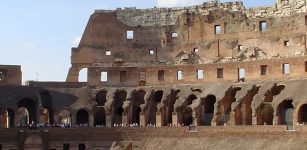 The Truth About Ancient Rome’s Vomitorium
Featured Stories | Jun 18, 2019
The Truth About Ancient Rome’s Vomitorium
Featured Stories | Jun 18, 2019 -
 Unknown Inscription Accidentally Found In South Tower Of 13th Century Cēsis Castle In Latvia
Archaeology | Aug 18, 2020
Unknown Inscription Accidentally Found In South Tower Of 13th Century Cēsis Castle In Latvia
Archaeology | Aug 18, 2020 -
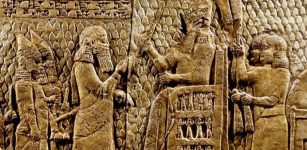 Lost Kingdom Of Idu And Its Seven Unknown Kings
Civilizations | Jul 25, 2023
Lost Kingdom Of Idu And Its Seven Unknown Kings
Civilizations | Jul 25, 2023 -
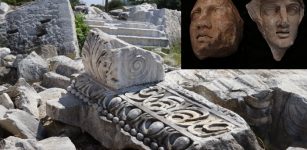 Once Impressive Temple Of Hadrian In City Of Cyzicus Will Be Restored Soon
Archaeology | Sep 7, 2020
Once Impressive Temple Of Hadrian In City Of Cyzicus Will Be Restored Soon
Archaeology | Sep 7, 2020 -
 Pacific God A’a: Fascinating Polynesian Sculpture Designed To Carry A Human Skull And Bones
Archaeology | Apr 9, 2016
Pacific God A’a: Fascinating Polynesian Sculpture Designed To Carry A Human Skull And Bones
Archaeology | Apr 9, 2016 -
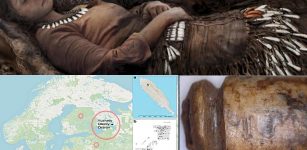 Teeth Pendants And Prominent Status Of Elks In Stone Age – New Study
Artifacts | Jan 15, 2021
Teeth Pendants And Prominent Status Of Elks In Stone Age – New Study
Artifacts | Jan 15, 2021 -
 Mystery Of The Lost Biblical Kadesh Where Moses Was Punished By God
Biblical Mysteries | Oct 17, 2017
Mystery Of The Lost Biblical Kadesh Where Moses Was Punished By God
Biblical Mysteries | Oct 17, 2017 -
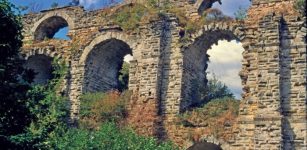 The 426-Km-Long Roman Aqueduct Provided Water For Constantinople – New Study
Archaeology | May 11, 2021
The 426-Km-Long Roman Aqueduct Provided Water For Constantinople – New Study
Archaeology | May 11, 2021 -
 Princess Mkabayi KaJama: Condemned And Hated Zulu Kingmaker Who Died A Lonely Woman
Featured Stories | Mar 20, 2019
Princess Mkabayi KaJama: Condemned And Hated Zulu Kingmaker Who Died A Lonely Woman
Featured Stories | Mar 20, 2019 -
 Fate Of The Woman Whose Mysterious Doppelgänger Ruined Her Life
Featured Stories | Mar 6, 2023
Fate Of The Woman Whose Mysterious Doppelgänger Ruined Her Life
Featured Stories | Mar 6, 2023 -
 Mystery Of Biblical Adam – A Hidden Story Within A Story Open To Interpretation
Ancient Mysteries | Jan 18, 2018
Mystery Of Biblical Adam – A Hidden Story Within A Story Open To Interpretation
Ancient Mysteries | Jan 18, 2018 -
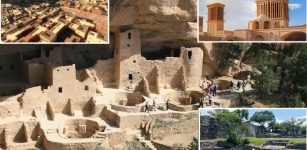 5 Lessons From Ancient Civilizations For Keeping Homes Cool In Hot, Dry Climates
Featured Stories | Sep 16, 2024
5 Lessons From Ancient Civilizations For Keeping Homes Cool In Hot, Dry Climates
Featured Stories | Sep 16, 2024 -
 ‘Giants’ Discovered In Ancient Grave In China
Archaeology | Jul 6, 2017
‘Giants’ Discovered In Ancient Grave In China
Archaeology | Jul 6, 2017 -
 Alexander The Great’s Biblical Connection
Featured Stories | May 29, 2019
Alexander The Great’s Biblical Connection
Featured Stories | May 29, 2019 -
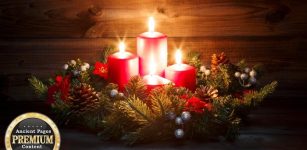 Advent: Facts And History About The Christian Season Celebration
Christmas Traditions | Dec 1, 2024
Advent: Facts And History About The Christian Season Celebration
Christmas Traditions | Dec 1, 2024 -
 Why Are Apples So Important During Halloween?
Ancient History Facts | Oct 30, 2024
Why Are Apples So Important During Halloween?
Ancient History Facts | Oct 30, 2024 -
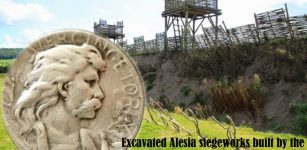 Siege Of Alesia: Last Decisive Battle That Ended Gallic Independence In France And Belgium
Featured Stories | Feb 1, 2017
Siege Of Alesia: Last Decisive Battle That Ended Gallic Independence In France And Belgium
Featured Stories | Feb 1, 2017 -
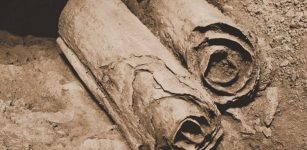 Qumran: The Dead Sea Scrolls And Their Connection To Enigmatic Essenes
Civilizations | Feb 20, 2016
Qumran: The Dead Sea Scrolls And Their Connection To Enigmatic Essenes
Civilizations | Feb 20, 2016 -
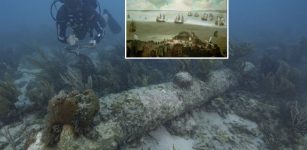 Sunken 18th-Century British Warship HMS Tyger Found In The Dry Tortugas National Park, Florida
Archaeology | Mar 19, 2024
Sunken 18th-Century British Warship HMS Tyger Found In The Dry Tortugas National Park, Florida
Archaeology | Mar 19, 2024



